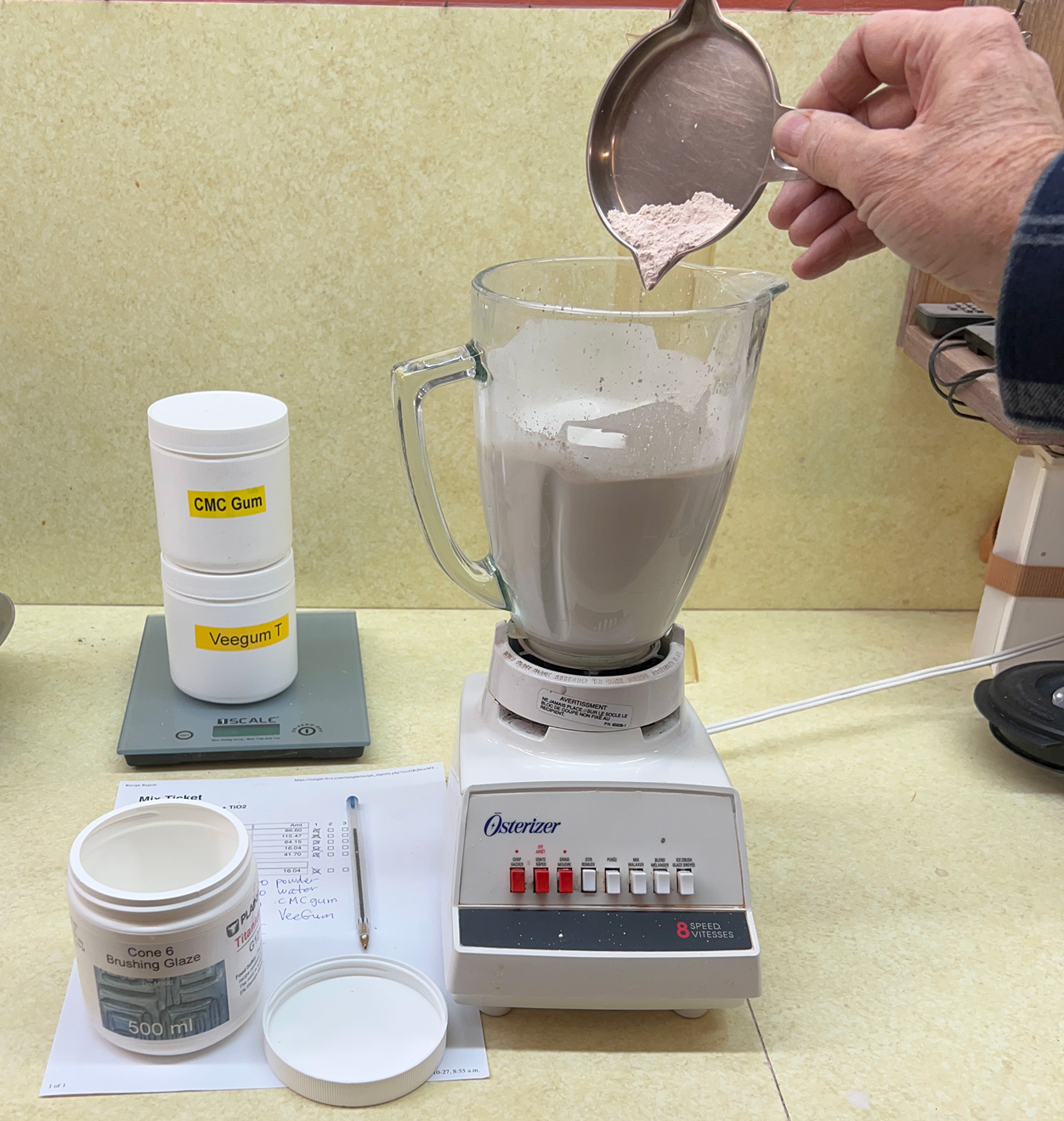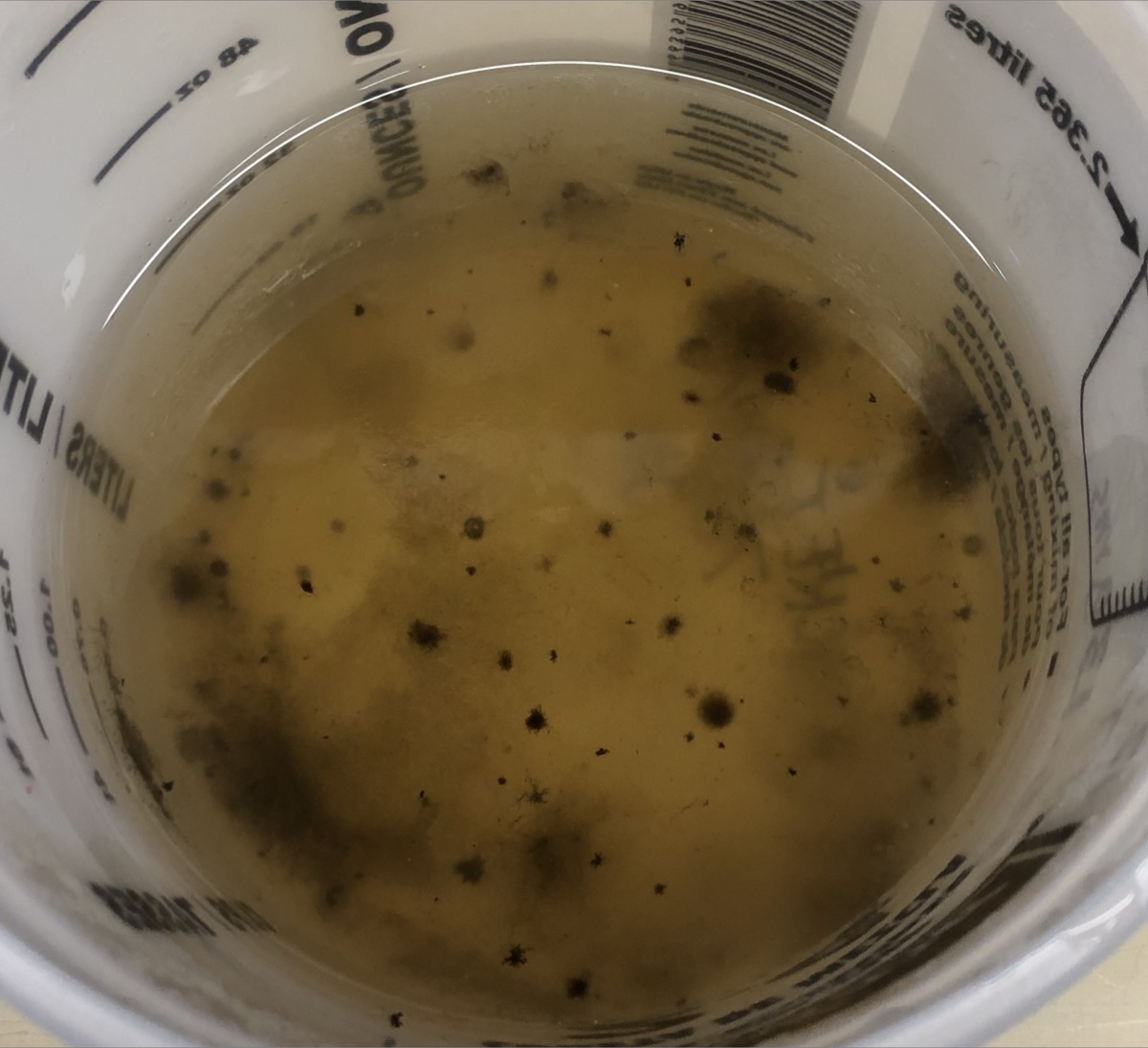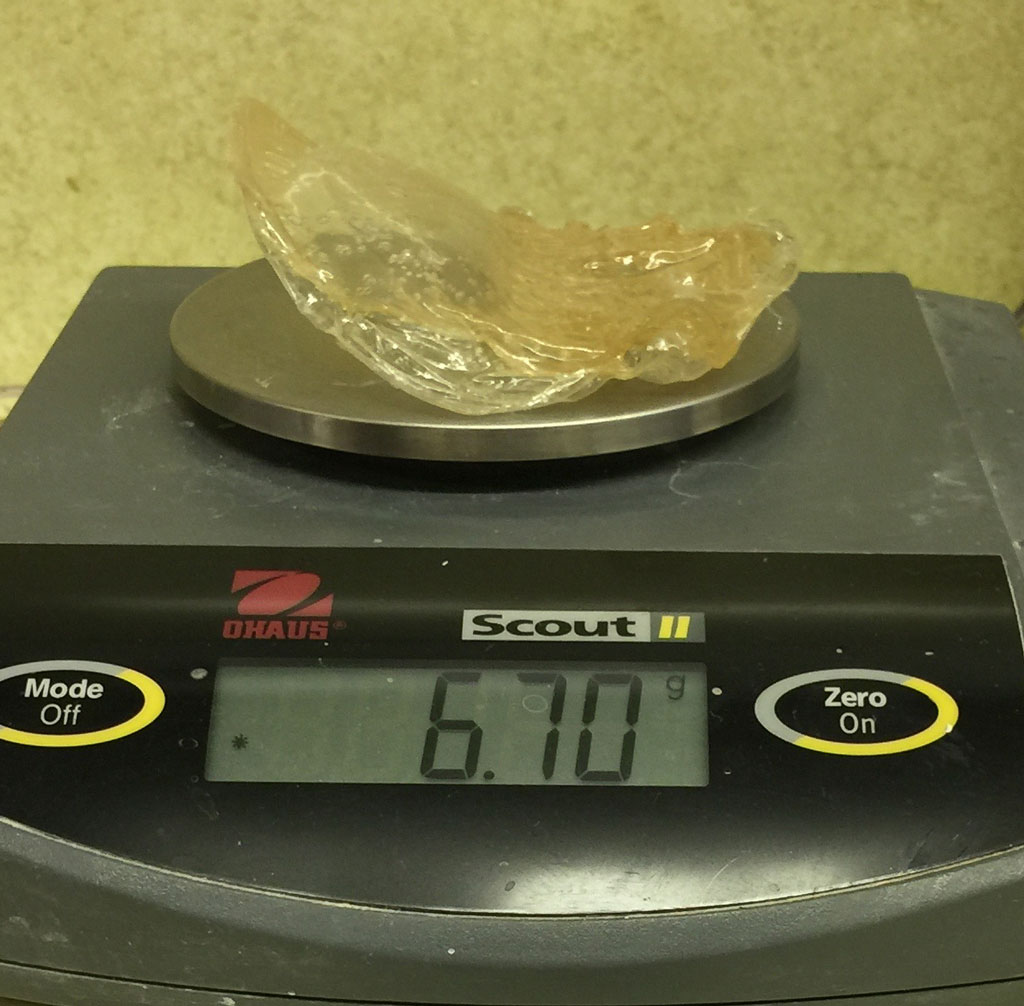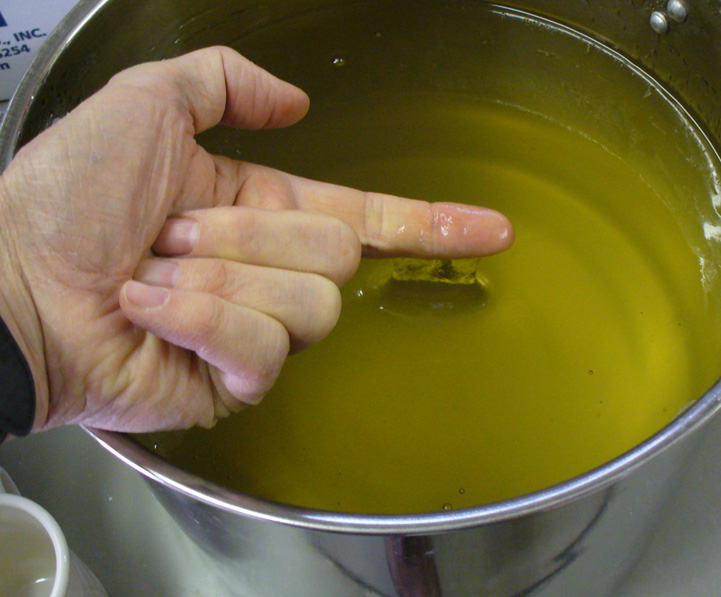| Monthly Tech-Tip | No tracking! No ads! |
What should the consistency of CMC gum solution be?
This is CMC gum 35g/liter gum solution after it has been thoroughly hot-mixed and cooled to about 30C. As it cools further and sits it thins. Gum solutions can have a higher CMC content, up to double this, but they are more difficult to use.
Most often, gum solution is intended to augment the water when batching a recipe - not adding to a glaze slurry. This is because adding enough to have any effect on an already-mixed glaze thins it (so an equal amount or more water should first be removed). For example, consider converting a dipping glaze to a brushing glaze: Adding the equivalent of 1.5% CMC gum powder, via this gum solution, to a gallon of glaze would also add almost a liter of water. Better to blender mix in the CMC power. CMC gum is often used in consort with a gelling agent like VeeGum, enabling more water (this is done in many commercial bottled glazes).
Related Pictures
Get a kitchen blender for mixing ceramic slurries

This picture has its own page with more detail, click here to see it.
Blender mixing is invaluable in slurry preparation in small-scale ceramics and testing. It is quick and so effective that not only are particle surfaces wetted much better, but clay particles can actually be reduced in size (literally ground finer). Slurry rheology is also stabilized. For example, thixotropy can often be achieved naturally, without any additives. Materials that are otherwise impossible to mix into a slurry (e.g. bentonite, Veegum, CMC gum) or just difficult (e.g. titanium dioxide, tin oxide) are no problem. Even slurry-processed porcelains benefit, not only being more plastic, but firing to a more homogeneous surface and to greater density. Just visually, it is easy to see how much improved this MNP slurry is (a local clay with porcelaneous properties). It was mixed using our propeller mixer and seemed OK (on the left). But the improvement after only 20 seconds in the blender (right) is amazing.
Control gel using Veegum, brushing properties with CMC gum

This picture has its own page with more detail, click here to see it.
This is G1214Z1 brushing glaze (with 5% titanium added). For a 340g powder batch (to get a pint) my initial target is 5g CMC gum and 5g Veegum. CMC controls drying speed and Veegum the amount of gelling. I first mix the CMC with the powder and shake the whole batch in a plastic bag. Then I add it all to 440g of water in the blender jar and mix it well (making sure no agglomerates remain (stage 1). Stage 2 is adding the VeeGum slowly, while high-speed blender-mixing, this is important because it enables tuning the degree of gel (which cannot be predicted). Because this recipe has little clay, it took all 5g of Veegum without overgelling (the entire mass moved freely in the mixer jar). But it did gel overnight (so 4g would be better next time). By contrast, it is the brushing behavior that demonstrates whether the amount of CMC is right. Not enough and coats dry too fast and go on too thick. Too much and it dries too slowly and too many coats are needed.
CMC gum solutions can go bad

This picture has its own page with more detail, click here to see it.
That is why glazes containing CMC often need a biocide if they are going to be stored for extended periods. We made this one. The gallon jar of Laguna gum solution sitting next to this did not go bad, that means they have added some sort of anti-microbial agent.
How much CMC gum powder is in the gum solution you buy?

This picture has its own page with more detail, click here to see it.
We dried out 100 ml of Laguna gum solution and were left with this residue on the bottom of the container, 6.7g. Thus, a liter contains 67g. What if you need 10g of gum to achieve a 1.5% concentration in a liter of typical dipping glaze? That would be 10/0.067=149g. That liter of glaze thus has to be able to tolerate the addition of 140g of extra water without thinning too much (keep in mind that the gum also thins it).
Using boiling water and an hour of propeller mixing to make our own gum solution the highest practical level of CMC we can reach is 3.5%, it is not completely clear why.
Videos
Links
| Materials |
CMC Gum
CMC gum is indispensable for many types of ceramic glazes. It is a glue and is mainly used to slow drying and improve adhesion and dry hardness. |
Got a Question?
Buy me a coffee and we can talk

https://digitalfire.com, All Rights Reserved
Privacy Policy

